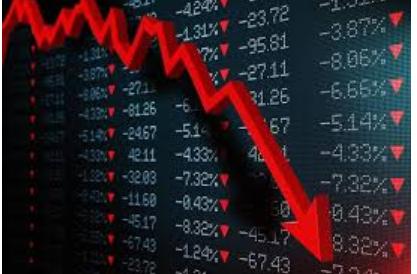Investorerne står over for særdeles store risici i år og næste år med dramatiske kursfald, fordi centralbankerne begynder med det største likviditetsdræn i historien, skriver Reuters klummeskribent Jamie McGeever. Rentestigningerne, neddroslingen af opkøb samt udsalg af centralbankermnes enorme obligationsbeholdninger kan føre til et likviditetsdræn på op mod 2.000 milliarder dollar. Sidst, de fire største centralbanker drænede markedet, var i 2018, og det var på 500 milliarder dollar. Det førte til et kursfald på 20 pct. verden over, men det rettede sig og blev på det halve. Men nu kan drænet blive fire gange så stort, så kan et kursfald blive lige så stort – på 20 pct? Udsigten til det skaber betydelig nervøsitet blandt analytikere. S&P 500-indekset steg med næsten 30 pct. sidste år, og Citibank mener, at på den baggrund kan et meget stort likviditetsdræn og et skifte i markedets opfattelser føre til et brandudsalg af aktier.
COLUMN-Historic central bank drain questions ‘buy the dip’: McGeever
By Jamie McGeever, Reuters. The chances of investors avoiding a rare down year for stocks are shrinking as central banks prepare to undertake the biggest liquidity drain in history.
The U.S. Federal Reserve, European Central Bank and Bank of England are flagging a reversal of emergency pandemic monetary settings. The mix of higher interest rates, a halt to bond buying and an eventual reduction of their bloated balance sheets will sap trillions of dollars of liquidity from world markets over the next 12 months and beyond.
To what extent historically expensive stock prices can absorb that shock is the investment question of the year.
Analysts at Morgan Stanley estimate that the G4 central banks will drain $2.2 trillion worth of liquidity from the global financial system over 12 months, in what they called “the largest quantitative tightening in history.”
They reckon the combined G4 central bank balance sheet will peak in May, and the $2.2 trillion reduction will be more than four times larger than the $500 billion drained when so-called ‘quantitative tightening’ was last tried in 2018.
That’s worth noting. World stocks fell 20% peak to trough that year as the Fed was raising rates and began shrinking its balance sheet. The eventual toll on markets forced the Fed to put these particular policy tools back in their box.
Could a 20% slide – technically ushering in a bear market – be on the cards this year? With the Fed under political pressure to tame inflation and make policy for Main Street rather than Wall Street, and with BoE and even ECB tightening now on the table too, it’s a credible prospect.
Citi strategist Matt King notes that if the relationship between central bank liquidity and financial markets in the coming months is as strong as it has been over the last decade, stocks and other markets are vulnerable.
G4 central banks expanded their balance sheets by a combined $8 trillion in 2020 and a further $3 trillion last year. Their aggregate balance sheet stands at over $26 trillion.
This was the jet fuel for last year’s equity boom, King argues, which delivered S&P 500 total returns of almost 30%. If it’s the relative change rather than the absolute level of liquidity that drives markets, removing even a fraction of the post-pandemic support could be huge.
“It’s not a global arms race in terms of tightening, but there is an inter-linkage in their policies, which collectively creates a global move. And that matters for risk assets,” King says.
“QE produced an ‘everything rally’. At a minimum, that liquidity is no longer pushing everything up. So logically, you should be worrying about the risk of an ‘everything selloff’,” he adds.
Others argue that the biggest impact on asset prices from quantitative easing or tightening is on announcement, as investors move quickly to reprice expected levels of interest rates, corporate profits, and valuations.
Certainly, the Fed December policy meeting minutes published on Jan. 5 detailing the discussion of QT dealt a heavy blow to market sentiment. Wall Street and global stocks fell around 10% before managing to halve these losses.
But if Citi’s King is right that QE or QT does not really hit markets until the process begins and liquidity is actually added or withdrawn, risk assets are in for a more torrid time over the next year or two.
Analysts at Bank of America estimate that the Fed’s balance sheet will shrink to 31% of GDP by the end of this year from 36% currently, while the ECB’s will shrink to 56% of GDP from 69% currently.
These are among the boldest forecasts out there, but if they are right it could represent liquidity drains of up to $1.5 trillion and $2 trillion, respectively. These are huge amounts, maybe too big for markets to bear.










